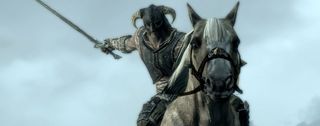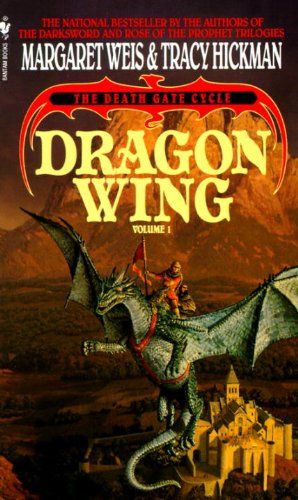If you like Skyrim you’ll also like…

The classic RPG question is ‘who do you want to be?’, and here The Elder Scrolls games have always been on strong ground. In the case of Skyrim, it’s how you go about answering that sees the magic emerge. Partly it’s the game’s vast open world, but there’s also the playful take on the subtle and not-so-subtle expectations built into the genre. More than anything, though, it’s that Skyrim is a fantasy about freedom—an icy, brutal freedom best explored with blade in hand.
Skyrim’s underworld—with its Dwarven ruins, huge chasms, and secret passages—plays with the experience of space in a way few other games do. Because the world below ground is crafted with such care and attention, each step I take in the world above becomes that much more meaningful. Skyrim never feels flat. It feels like there’s a mysterious portal or mad Daedra lurking under every hill.
Beyond the setting, Skyrim’s approach to fantasy trappings also strikes fresh notes. It succeeds in making me care (again) about the intricacies of ancient weaponry, odd bestiaries, and the oh-so-serious ways of a dominant culture—in Skyrim’s case, the Vikings. Even following in the footsteps of Morrowind and Oblivion, Skyrim excels at making the familiar seem strange and interesting once more.
So, in this installment of ‘If you like…’, I’ve picked out some non-games that share Skyrim’s disorienting geography, its mostly-medieval sensibility, and its affection for all-things Nordic. And also, of course, big bloody swords.
Valhalla Rising, directed by Nicolas Winding Refn
There are few other imaginings of pre-modern life that capture the dark and brutal potential of such a time quite like Valhalla Rising. Played by the silent but effective Mads Mikkelsen, (who currently stars as Hannibal in the TV series), we follow the journey of a warrior named One-Eye and his encounters in a world reeling from religious fanaticism and the selfish pride of rival chieftains. Sounds like a typical day in Skyrim to me.
As you can probably guess from the trailer above, One-Eye’s solution to most problems involves astonishing acts of sudden violence. But Drive director Winding Refn’s film doesn’t ignore the philosophical problems that a world built on blood and death brings to the surface. What if hell is a place we make for ourselves and can never escape? But setting aside its stylish surrealism, which saw the movie described as a medieval Apocalypse Now, Valhalla Rising also works as a beautifully-shot, incredibly slow burn, adventure film with an effective, if gruesome, interpretation of the hard-bitten solitary warrior mythos.
The Death Gate Cycle, by Margaret Weis and Tracy Hickman

The seven-volume Death Gate Cycle takes Weis and Hickman’s talent for fantasy world-building, so evident in their genre-defining earlier work on Dragonlance, and turns the dial up to 11. In a way reminiscent of Skyrim’s tendency to always push me to look below the surface, the Death Gate Cycle universe is anything but flat. Following a cataclysmic event, earth is remade into four distinct realms, each primarily built around a single element—air, water, fire and stone. These planets feature floating continents, mysterious machines, and yes, dragons.
PC Gamer Newsletter
Sign up to get the best content of the week, and great gaming deals, as picked by the editors.
We again see the introduction of elves, dwarves, and men, as well as other races, but they are so defined by their geography—and the conflict this creates—that these familiar archetypes still resonate. One of my favorite images appears in the second book and deals with Pryan, the fire planet. On a world bathed in constant sunlight, endless jungle forests have grown and created an almost unimaginably thick layer of vegetation. The actual ground has become a legendary place of wingless dragons and massive caverns the dwarves carve out of moss instead of stone. Survival in this environment then becomes a compelling force that drives the narrative the story.
The Death Gate Cycle is a series to lose yourself in.
Trollhunter, directed by André Øvredal
This 2010 Norwegian film selects a piece of mythical Nordic fantasy and drops it straight into the modern age. What if there really were trolls roaming the hills and highlands of Scandinavia? What would we have to do about them? Trollhunter unveils its story in the style of a found-footage documentary. It’s a good approach for the subject matter, as the film is brilliant at simulating the dread of this ‘what-if’ encounter and also not taking itself too seriously.
So if you’ve ever had a good read through Finn’s Troll Slaying manual or maybe lived through a bad moment with one of the beasts somewhere outside Winterhold, you may crack a smile when you see how a more modern hunter tackles his troll problem. Along the way you also get a nice tour of Norway’s misty valleys, dark forests, and icy plateaus.
Longswords in the 21st-century
No one talks about the combat in Skyrim in the same kind of hushed, reverent tone so many save for something like, say, Dark Souls. The game’s swordplay just isn’t that intricate. But Skyrim’s combat still leaves me feeling great. I’m a sucker for those kill-screen cinematics I guess. And with enough commitment to crafting, even one of the game’s basic iron blades becomes an effective partner in all but the deadliest dungeons. The very first character I made ran around as a sort of unstable blacksmith on the hunt for the secrets to crafting Skyrim’s finest greatsword.
But one thing I’ve discovered recently is that I’m not the only one fascinated by the potential of these archaic weapons. As you can see in the video above, the longsword is one of the central weapons in the growing practice of what are now called Historical European Martial Arts. Want to see how that dual-wield style might actually feel, well, there’s a good chance you might be able to find a fencing or longsword fighting club where you could do just that. Or maybe you might want to forge your own?
For more instalments of ‘If you like...’, check out Patrick’s recommendations for Fallout 3 and Deus Ex fans.

The Elder Scrolls Online dev says the 'metaverse' is sinking because it ignored 20 years of games doing the exact same thing: 'It's not new, and they should stop treating it like it's new'

The Elder Scrolls Online has made nearly $2 billion in its lifetime, 9 years after the big comeback that doubled its player count overnight


